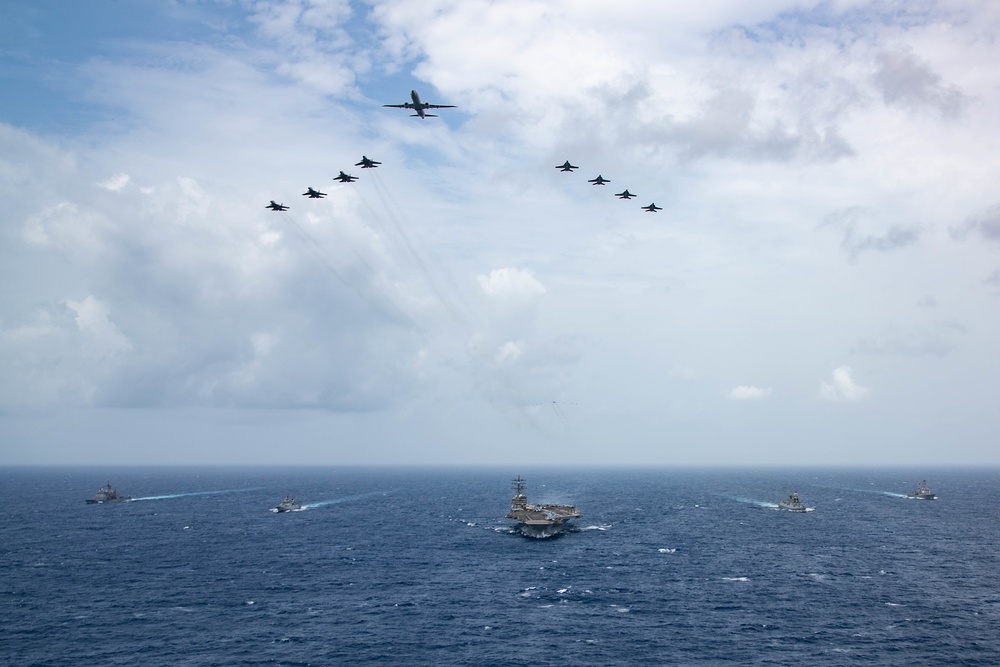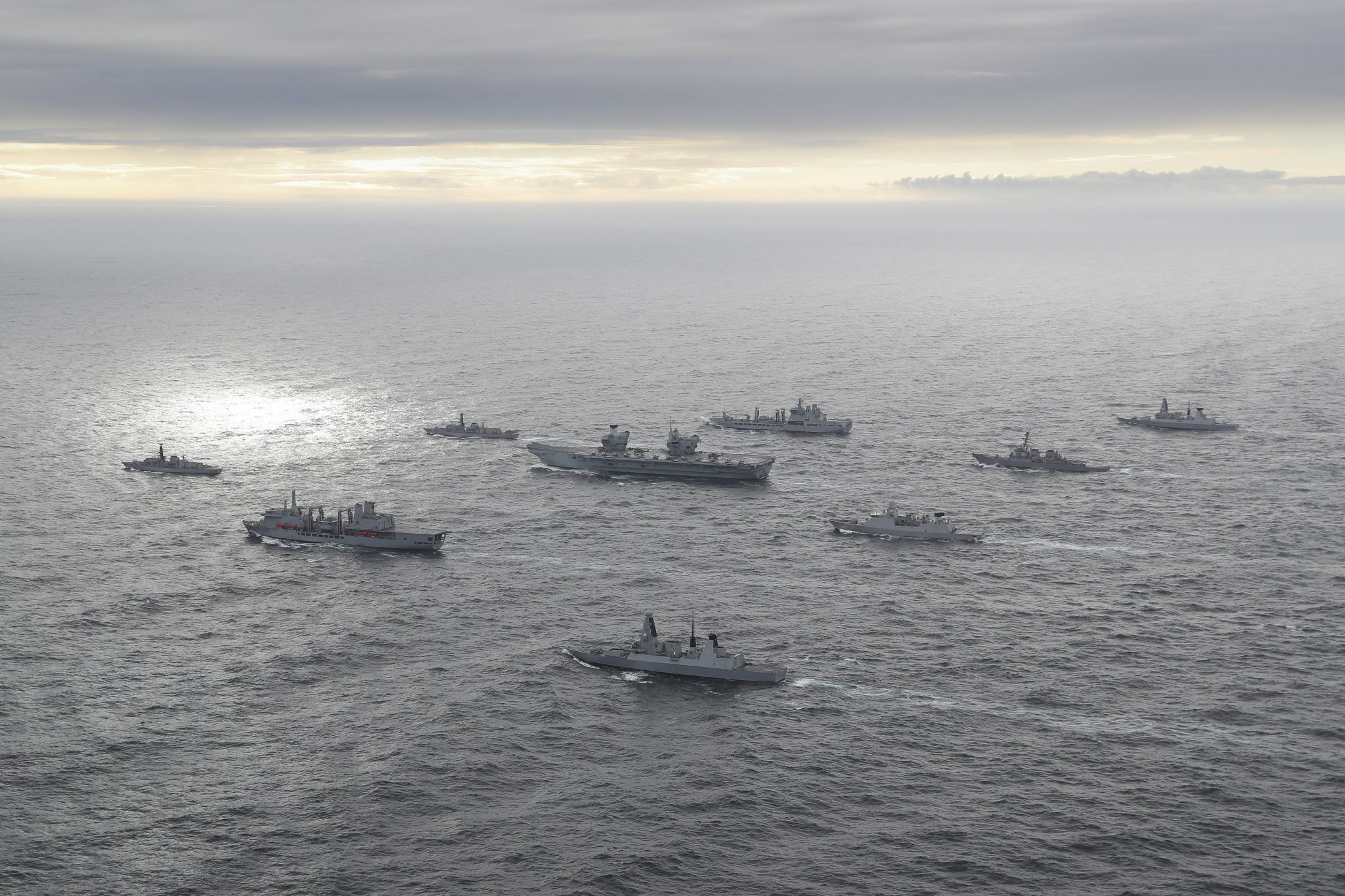

India finally agreed to pay an additional US$1.2 billion for the project, doubling the original cost. The delay issues were compounded by ongoing cost overruns, leading to high-level diplomatic exchanges. While Viraat's retirement had been pushed out to 2010–2012, she underwent a final refit, enabling her to serve through 2016.

The announced delivery date for INS Vikramaditya was August 2008, allowing the carrier to enter service just as the Indian Navy's only light carrier INS Viraat retired. Vikramaditya (left) alongside the Russian aircraft carrier Admiral Kuznetsov in the port of Severomorsk in 2012
INDIAN CARRIER BATTLE GROUP UPGRADE
The upgrade involved stripping all the weaponry and missile launcher tubes from the ship's foredeck to make way for a " short take-off but arrested recovery" (STOBAR) configuration, converting the Gorshkov from a hybrid carrier/cruiser to a pure carrier. Facilities and procedures for training pilots and technical staff, delivery of simulators, spare parts, and establishment maintenance on Indian Navy facilities were also part of the contract. The deal also included the purchase of 12 single-seat Mikoyan MiG-29K 'Fulcrum-D' (Product 9.41) and four dual-seat MiG-29KUB aircraft (with an option for 14 more aircraft) at US$1 billion, six Kamov Ka-31 "Helix" reconnaissance and anti-submarine helicopters, torpedo tubes, missile systems and artillery units. In 2009, Northrop Grumman offered the advanced E-2D Hawkeye to the Indian Navy. The navy looked at equipping the carrier with the E-2C Hawkeye but decided not to. The ship would be free, while India would pay US$800 million for the upgrade and refit of the vessel and an additional US$1 billion for the aircraft and weapons systems. On 20 January 2004, after years of negotiations, Russia and India signed a deal for the sale of the ship. This attracted the attention of India, which was looking for a way to expand its carrier aviation capabilities. History įurther information: Soviet aircraft carrier Admiral Gorshkov The deal īaku entered service in 1987, renamed Admiral Gorshkov in 1991, but was deactivated in 1996 because she was too expensive to operate on a post-Cold War budget. On 14 June 2014, the Prime Minister of India, Narendra Damodar Modi, formally inducted INS Vikramaditya into the Indian Navy and dedicated her to the nation. She was commissioned on 16 November 2013 at a ceremony held at Severodvinsk, Russia. The transformed ship completed her sea trials in July 2013 and first STOBAR aviation trials in September 2013.

The carrier was invested by India on 20 January 2004 after years of negotiations at a final arms sales price of $2.35 billion. Originally built as Baku and commissioned in 1987, the carrier served with the Soviet Navy and later with the Russian Navy (as Admiral Gorshkov) before being decommissioned in 1996. 'Brave as the Sun') is a modified Kiev-class aircraft carrier and the flagship of the Indian Navy. INS Vikramaditya ( Sanskrit: Vikramāditya, lit. Three 30 m wide arrester gears and three restraining gears.10 × Kamov Ka-31 AEW&C and Kamov Ka-28 ASW helicopters.26 × Mikoyan MiG-29K multi-role fighters.Long-range Air Surveillance Radars, LESORUB-E, Resistor-E radar complex, CCS MK II communication complex and Link II tactical data system Sold to the Indian Navy on 20 January 2004Ĥ5,400 tons of loaded displacement Ħ turbo alternators and 6 diesel alternators which generate 18 MWe Ĩ turbo-pressurised boilers, 4 shafts, 4 geared steam turbines, generating 180,000 horsepower (134,226 kW) ġ3,500 nautical miles (25,000 km) at 18 knots (33 km/h) Black Sea Shipyard, USSR, and Sevmash, Russia


 0 kommentar(er)
0 kommentar(er)
